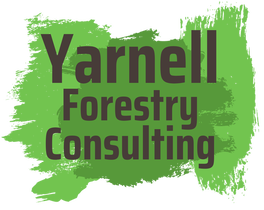forest management - photographs and explanations
Forest Stand Improvement
What is forest stand improvement?
- Forest stand improvement is also known as timber stand improvement and commonly abbreviated FSI or TSI.
- FSI is a forest management practice where non-merchantable trees are cut or killed to thin a wooded stand.
- Individual trees are selected for removal or retention based on their merits (species, form, size, etc.) and their spacing.
What can forest stand improvement do for my woods?
- WILDLIFE FOOD AND COVER - Light to the forest floor encourages the growth of plants that provide browse for deer and concealment for turkeys.
- HEALTHY WOODS - A tree’s ability to resist pests and drought is closely related to how much light is received. Thinning provides light to those residual trees.
- MAST PRODUCTION - Studies have shown that oak trees may produce up to 7 times more acorns after FSI.
- TIMBER PRODUCTIVITY - Trees grow faster with less competition from other trees.
- TIMBER QUALITY - The best trees are retained, and they have room to grow.
- FUTURE CANOPY - The next generation of trees can sprout up due to increased light to the ground.
How do I get started?
- A forest management plan is the best place to begin. A professional forester evaluates your woods and prescribes target thinning levels and focus areas.
- There may be cost-share funding available to help cover the cost of the plan.
- Typically cost-share funding for FSI is only available after a forest management plan is in place.
- After the forest management plan is in place, a few different thinning methods may be used.
- Cut down smaller trees (<9 inches diameter), stumps may be treated with herbicide to prevent re-sprouting
- Girdle larger trees and leave them standing - shallow chainsaw cut all the way around the tree, with or without herbicide
- Three of the larger trees in the "after" picture above were double-girdled and left standing. Zoom in to see details.
- Three of the larger trees in the "after" picture above were double-girdled and left standing. Zoom in to see details.
- Hack and squirt - hatchet cuts in tree stem are sprayed with herbicide, typically smaller trees
- Basal bark spray - low-pressure, high-volume herbicide application for small trees
What forest stand improvement is NOT
- Not a commercial timber harvest
- Not just cutting the small trees or brush
- Not creating group openings in the woods like the temporary forest openings practice
Woodland Restoration
What is a woodland?
- Tree canopy is more open to let light to the ground - typically 50-75% tree coverage
- Diverse ground vegetation consists of native grasses and forbs
- Canopy trees are relatively fire tolerant
What are the benefits of restoring woodlands?
- WILDLIFE FOOD - Fire removes leaf litter and light from open canopy encourages desirable native ground plants
- HABITAT DIVERSITY - Many woodlands have been lost across the U.S., restoring woodlands can provide quality habitat for a variety of species
- AESTHETICS - Many people agree that the end result is pleasing to the eye, with a wide variety of wildflowers and less woody brush to walk through
How to get started
- A forest management plan is the best place to begin. Cost share opportunities may be available.
- Thinning from below - removes mostly smaller trees and those with lower fire tolerance - thins canopy
- Prescribed burning removes leaf litter, knocks back woody brush, and stimulates growth of native forbs and grasses
- Periodic burning will be required to maintain this structure and appearance
Glade Restoration
What is a glade?
- Unique ecosystem with few or no trees
- Diverse ground plants - 100 or more species of grasses, forbs, and wildflowers
- Most often located on dry south or west slopes with thin soils and exposed boulders or ledge rocks
- As fire has been suppressed here, cedars and other trees have taken over many glades
Benefits to your land
- BIODIVERSITY - habitat for many uncommon species of plants, lizards, snakes, birds, and other wildlife
- AESTHETICS - many native wildflowers with bright blooms through spring and summer
- POLLINATOR HABITAT - pollinators are attracted to the many wildflowers present in glades
How to get started
- A forest management plan is the best place to begin. Cost share opportunities may be available.
- After the forest management plan is in place, glade restoration can begin.
- All cedar trees and most other trees should be removed.
- Prescribed burning can then be used to further restore glade conditions.
- Periodic burning can then maintain glade conditions.
More photos and explanations are coming soon!
